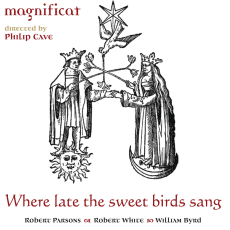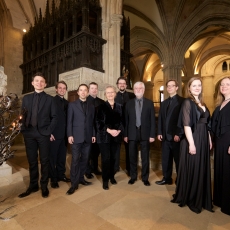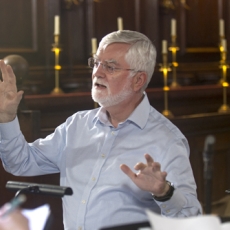Magnificat - Where Late the Sweet Birds Sang - Early Music Review
What a way to open a CD! The spare beauty of Byrd's hymn Christ qui lux es et dies is quite devastating: no fancy part-writing, just simple block chords in which the hymn tune, sung in its unembellished form at the beginning and end weaves through the harmony leaving the other parts forlorn and angular. Performed with measured solemnity, this epitomises Philip Cave's style. The whole recording is pervaded by the Phyrgian mode which instils a sense of loss and longing, fitting for both the exiled nation of Israel for which Jeremiah wrote his Lamentations, and for the covert Catholics of the Tudor age, exemplified by Byrd in his setting of those texts. White's Lamentations are less well-known than those of Byrd or Tallis, but I hope this recording, and Sally Dunkley's superb editions, will help to redress that. The first section of White's version ends yearningly with its desolate first0inversion dominant chord; there are wonderful passages at each iteration of "Jerusalem, convertere ad Dominum Deum tutum" where the parts lap like gentle waves.
Magnificat's recorded sound is spacious and rich, underpinned by a strong bass department, but with all the parts clear and some marvellous chording and part-crossing; false relations are met with discretion, and the phrasing is heart-rending. The ‘English' pronunciation of the Latin is not obtrusive. The pitch chosen for Parson's otherwise familiar Ave Maria transforms it from showpiece to prayer. Very highly recommended.


